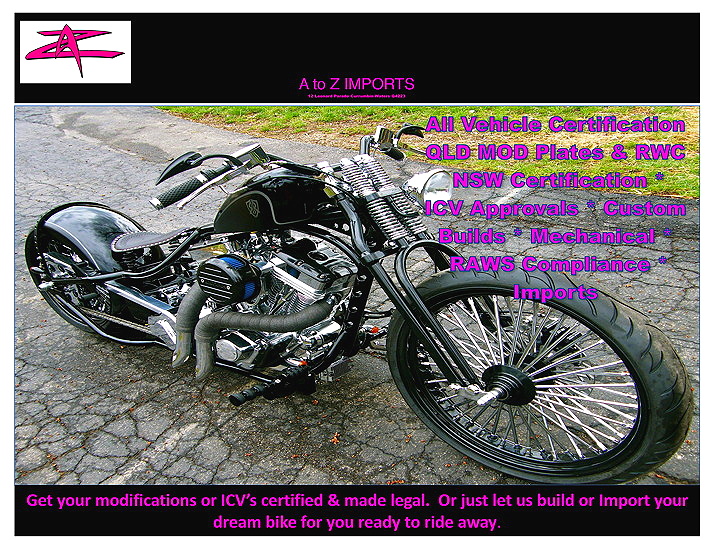
Will the real American Indian please stand up
I originally started watching shows like American Chopper and I thought I could build one of those—so I got involved with building custom bikes.
THE rolling chassis for the American Indian came from Sydney. It was actually hanging from the roof in a panel shop and a friend of mine knew about it. He went down there one weekend and brought it back to Queensland for me. The rolling chassis came with the springer front-end and the plunger rear-end. It sat in the shed for about five months and I was wondering what to do with it when the Indian motor came along at the right price.

I already had two custom bikes but, I thought, ‘What the heck—let’s build the American Indian bike!’ and I employed Shane to put it altogether for me. Shane was planning on going out on his own but he sort of needed a bit of a push. I asked him to work for me, to cut the frame up and make everything fit, until he got on his feet.
There were no mounts for the transmission and Shane had to fabricate new ones from scratch. The battery box was hung off the side to keep with the old fashioned theme.


The oil tank came from Rocket Industries in Sydney. We measured it up and ordered it, and it fits perfectly.
The frame and front-end were originally painted white. They were stripped down and became part of the huge box of parts that went to the chrome-platers.
My mate at Jerome Customs Upholstery did all the seating. He owed me a favour so it was cheap.


The Indian motor is 100 cubic inches. It got a hell of a lot of power—it goes like a rocket. Most people don’t realise it’s an Indian motor and usually ask how we made the carby come out the wrong side.
I left the paintwork with Little Mick and told him I wasn’t in a hurry. When it was finished and I rang him and asked him how much it cost, it was far less than I expected and I was thinking he must have used stickers or something. But when I picked it up and saw how good it was, I said, “Jesus, Mick! You’re too cheap!”

We put the bike together—got the motor and everything bolted into the frame—then took it to Fat Pipes so he could measure it up the exhaust system. He did a really great job.


The plunger on the back-end worked better than I expected. When we first started it and rode it down the street, it went straight down the line. Just like riding a pushbike.

studio photos by Walter Wall; words by Brian from Pine River Towing

